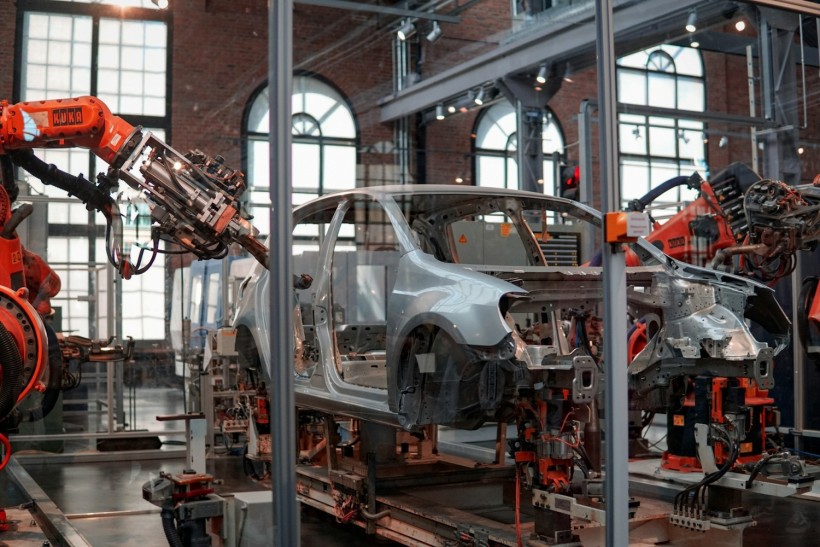How Automation Is Steering Legislation in the Transportation Industry

Transportation has become much safer, more efficient, and less reliant on human intervention over the years. According to a report by McKinsey & Company, automation has the potential to reduce transportation costs by up to 40% while simultaneously cutting greenhouse gas emissions by 60%. But things are not as simple as letting an advanced AI drive our trucks around the country. There's legislation and overall safety at play as well. Let's see how it all plays out and what we can expect in the not-so-distant future.
The Current State of Automation in Transportation
The transportation sector is undergoing a significant transformation. It's mostly driven by advances in automation technologies, with autonomous vehicles (AVs) at the forefront. As of 2023, over 1,400 self-driving cars, buses, and trucks have been tested on U.S. roads. That's a robust increase from just a few hundred in 2018. Several companies are testing fleets that have collectively covered millions of miles in real-world conditions.
The integration of artificial intelligence in logistics and supply chain management is streamlining operations, reducing costs, and improving efficiency. The rapid advancements of these technologies signal the pressing need for legislative frameworks to keep pace with technological innovations.
Legislative Responses at Federal and State Levels
In response to the rapid development of autonomous vehicles, both federal and state governments in the U.S. have taken proactive steps to establish regulatory frameworks. At the federal level, the National Highway Traffic Safety Administration (NHTSA) released updated guidelines in 2020 aimed at promoting the safe integration of autonomous vehicles into the national fleet.
States have adopted varying approaches. California has implemented stringent testing and reporting requirements for AVs, leading to over 300 permits issued to companies testing autonomous technologies as of 2022. Arizona has adopted a more laissez-faire stance, promoting itself as a test-friendly environment. This diversity in regulatory approaches reflects the complex balance between fostering innovation and ensuring public safety across different jurisdictions.
Safety and Liability in Automated Transportation
The shift towards automated transportation raises significant safety and liability concerns, necessitating robust legal frameworks to address potential risks. Safety issues came to the forefront following several high-profile incidents, including a fatal collision involving a self-driving Uber vehicle in Arizona in 2018, prompting a reevaluation of safety protocols across the industry. According to one truck accident attorney from Indiana, in 2019 alone, unsafe driver actions were behind 65 percent of all collisions in the state. On one hand, the new technologies promise to decrease human error, but on the other, they raise some new questions.
Liability in such cases remains a contentious issue, as traditional concepts of fault are challenged by the involvement of autonomous systems. To address these complexities, some states, such as Michigan, have enacted laws stipulating that manufacturers retain liability if their vehicle's autonomous technology is at fault in an accident. We must find a way to adapt liability to the realities of autonomous vehicle technology through laws that protect public safety while supporting technological innovation.
Employment Impact and Legislative Measures
The rise of automation in transportation poses significant challenges to employment, particularly for driving professions. According to a 2021 report by the Bureau of Labor Statistics, over 3 million driving jobs in the U.S. are at risk of displacement due to autonomous vehicle technology. In response, several states have initiated legislative measures to mitigate these impacts.
California has established a fund dedicated to retraining and supporting displaced workers, focusing on skills that are less likely to be automated. Some states are exploring the introduction of a tax on the use of autonomous vehicles, with proceeds aimed at funding social safety nets and retraining programs. These legislative actions reflect a growing recognition of the need to balance the benefits of automation with protections for workers likely to be affected by technological advancements.
Data Security and Privacy Concerns
Data security and privacy are paramount concerns as automation in transportation relies heavily on data collection and processing. Autonomous vehicles, for instance, generate approximately four terabytes of data per day, including sensitive information about users' travel patterns and preferences. This vast data collection has prompted legislative action to safeguard privacy and secure data.
The U.S. Senate introduced the SPY Car Act in 2019, which mandates that all personal data collected by autonomous vehicles be protected against unauthorized access or hacking. The act also requires manufacturers to provide clear notifications to consumers about what data is being collected and how it will be used. These legislative measures are critical in building public trust and ensuring that the benefits of automated transportation do not come at the expense of individual privacy and data security.
Public Perception and Its Influence on Legislation
Public perception plays a big role in shaping legislation for automated transportation. A 2022 survey by the American Automobile Association (AAA) revealed that while 63% of Americans are skeptical about the safety of autonomous vehicles, there's a growing openness to the technology, with 58% expressing curiosity about its potential benefits. This mixed sentiment influences legislative actions as lawmakers balance public enthusiasm for technological advancements with widespread safety and security concerns.
Following high-profile autonomous vehicle accidents, some states have tightened regulations, requiring more rigorous safety demonstrations and public reporting to restore confidence. Such legislative responses underscore the importance of aligning new technologies with public expectations and safety demands to facilitate smoother integration into society.
Predictions and Recommendations for Future Legislation
As automation technology continues to evolve, legislative bodies must anticipate and adapt to emerging challenges. Experts predict that by 2030, autonomous vehicles could account for up to 40% of all passenger vehicle miles traveled in the U.S., which will necessitate comprehensive updates to traffic laws, insurance regulations, and urban planning policies.
Legislators are advised to consider proactive measures such as establishing a national regulatory framework to ensure consistency across states, enhancing cybersecurity protocols to protect against increasing threats, and fostering public-private partnerships to leverage industry insights in policy-making. Continuous public engagement and education efforts will be a significant factor in addressing persistent concerns and misconceptions about autonomous technologies.
Subscribe to Latin Post!
Sign up for our free newsletter for the Latest coverage!
* This is a contributed article and this content does not necessarily represent the views of latinpost.com














